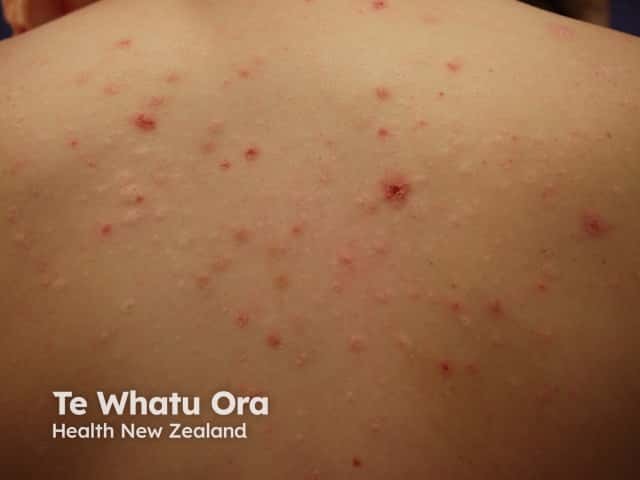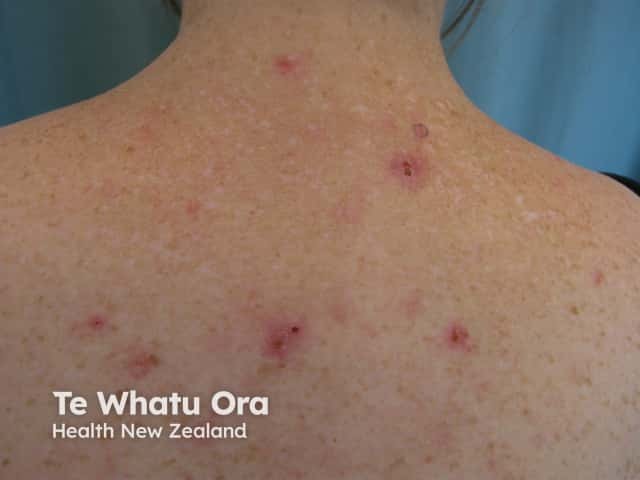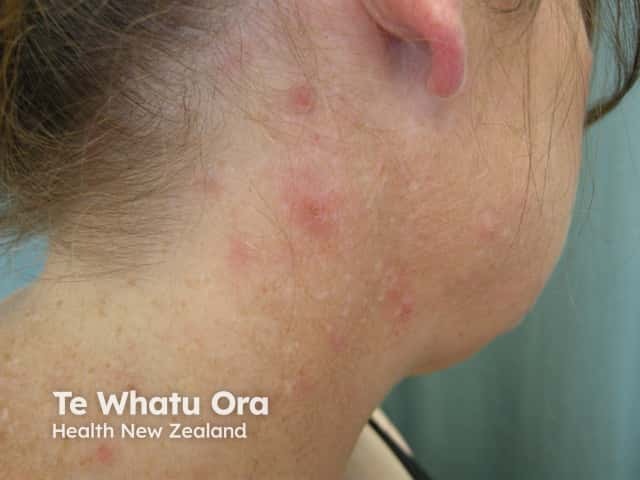Main menu
Common skin conditions

NEWS
Join DermNet PRO
Read more
Quick links
Author: Reviewed and updated by Dr Amanda Oakley, Dermatologist, Hamilton, New Zealand; Vanessa Ngan, Staff Writer; and Clare Morrison, Copy Writer; June 2014.
Introduction Demographics Causes Clinical features Treatment
Acne urticata is a term that is not often used today. It describes very itchy papules or prurigo (itchy spots) that affects the face, neck and cape area (upper trunk and upper arms). It is not actually acne.
It is not clear whether acne urticata is a unique disorder. Lesions described as acne urticata may be a localised form of compulsive skin picking. Others confined to sun exposed sites are likely a form polymorphous light eruption.
Acne urticata is most often described in middle-aged women that are suffering some form of stress and anxiety.
The cause of acne urticata is not understood. It may be due to an innate immune reaction within the hair follicle, resulting in the production of pruritogenic substances, a neuropathic form of pruritus (itch), or psychogenic in origin.
Although women with acne urticata are often under stress, it is hard to know whether the stress precedes the rash or whether the stress is caused by the rash's itchiness.
In acne urticata, small bumps (papules), blisters (vesicles) and pustules arise in the "cape" area of the body, ie the face, scalp, neck, upper arms and upper trunk. They are so intensely itchy that they are rapidly scratched or picked. This leaves unsightly, crusted lesions, which may then leave permanent small white scars.

Acne urticata

Acne urticata

Acne urticata
Acne urticata is difficult to treat effectively and may persist for years. The following may be useful: